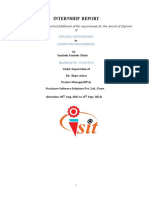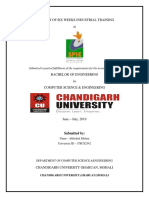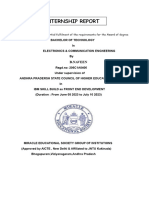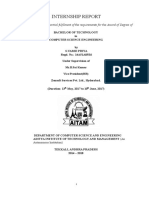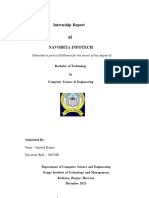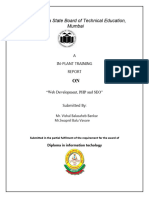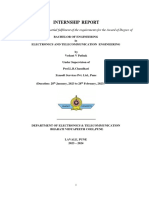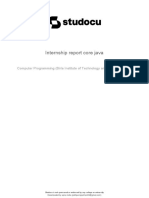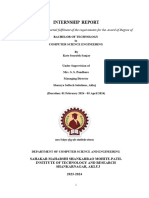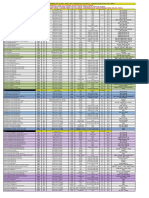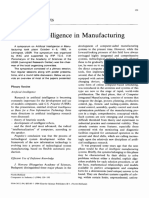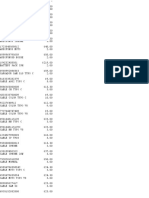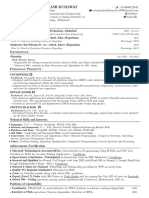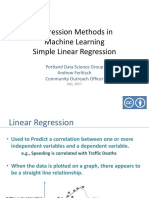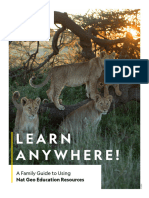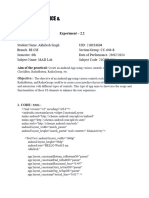0% found this document useful (0 votes)
70 views29 pagesZoho Developer Internship Report
This document is an internship report submitted by Satya Prakash for the ZOHO Developer Internship at Infobyd Software Solution Pvt. Ltd., as part of the requirements for a Bachelor of Technology degree in Computer Science & Engineering. It includes acknowledgments, an approval certificate, and a detailed table of contents outlining the project scope, technologies used, functional requirements, and system design for an office employee attendance management system. The report emphasizes the development process, user requirements, and the overall goal of creating an efficient attendance tracking system using Zoho Creator.
Uploaded by
Ankit ModiCopyright
© © All Rights Reserved
We take content rights seriously. If you suspect this is your content, claim it here.
Available Formats
Download as DOCX, PDF, TXT or read online on Scribd
0% found this document useful (0 votes)
70 views29 pagesZoho Developer Internship Report
This document is an internship report submitted by Satya Prakash for the ZOHO Developer Internship at Infobyd Software Solution Pvt. Ltd., as part of the requirements for a Bachelor of Technology degree in Computer Science & Engineering. It includes acknowledgments, an approval certificate, and a detailed table of contents outlining the project scope, technologies used, functional requirements, and system design for an office employee attendance management system. The report emphasizes the development process, user requirements, and the overall goal of creating an efficient attendance tracking system using Zoho Creator.
Uploaded by
Ankit ModiCopyright
© © All Rights Reserved
We take content rights seriously. If you suspect this is your content, claim it here.
Available Formats
Download as DOCX, PDF, TXT or read online on Scribd
/ 29





















